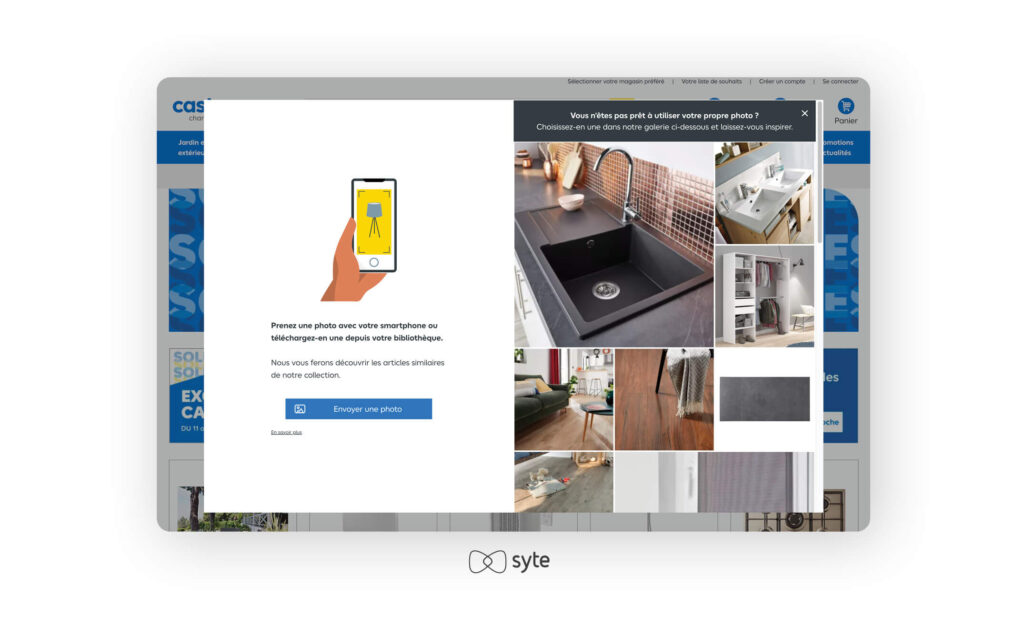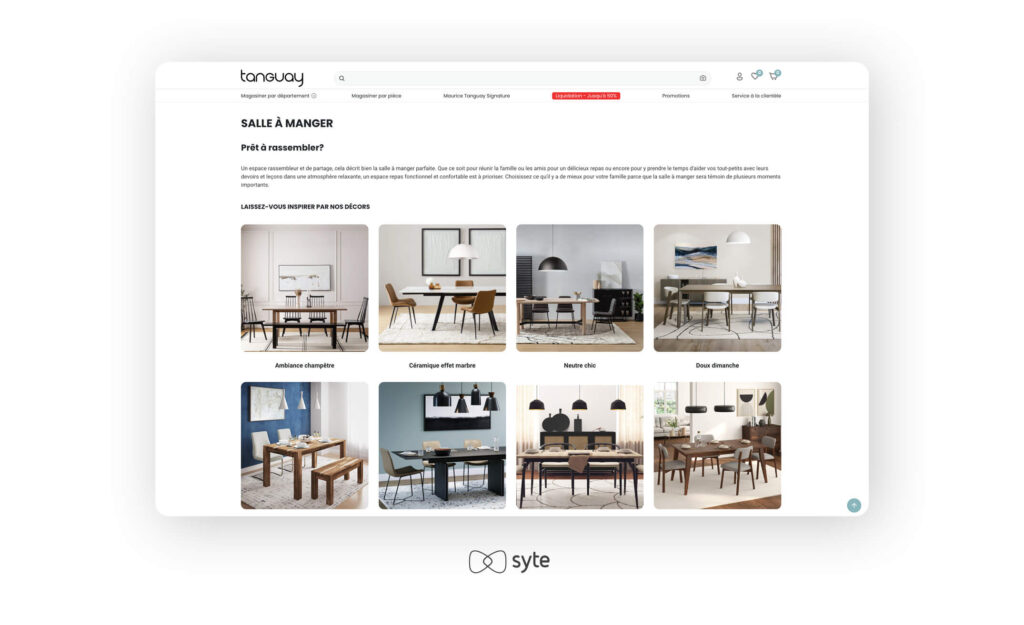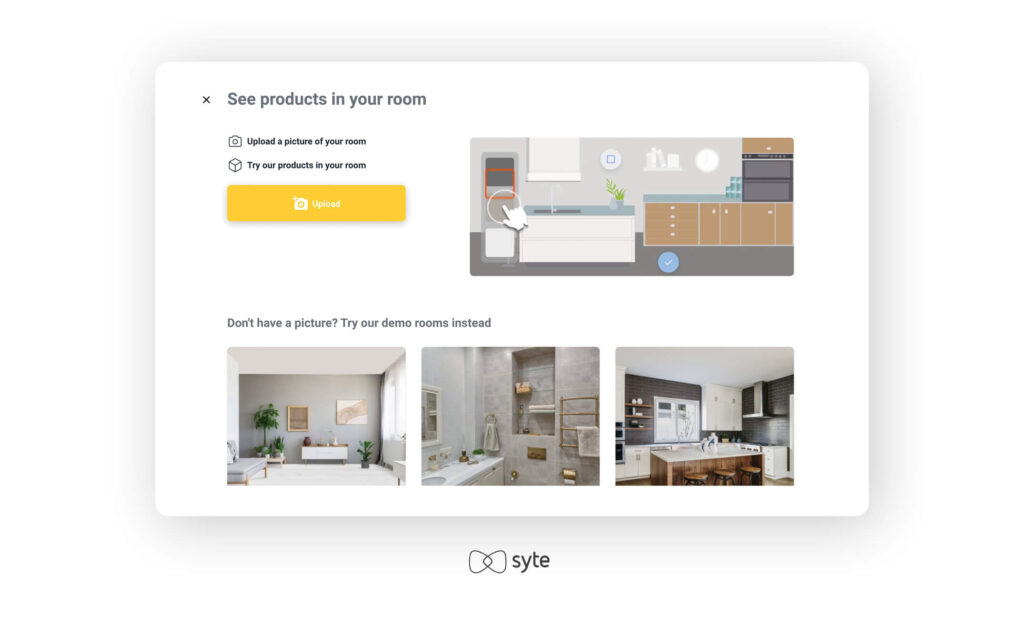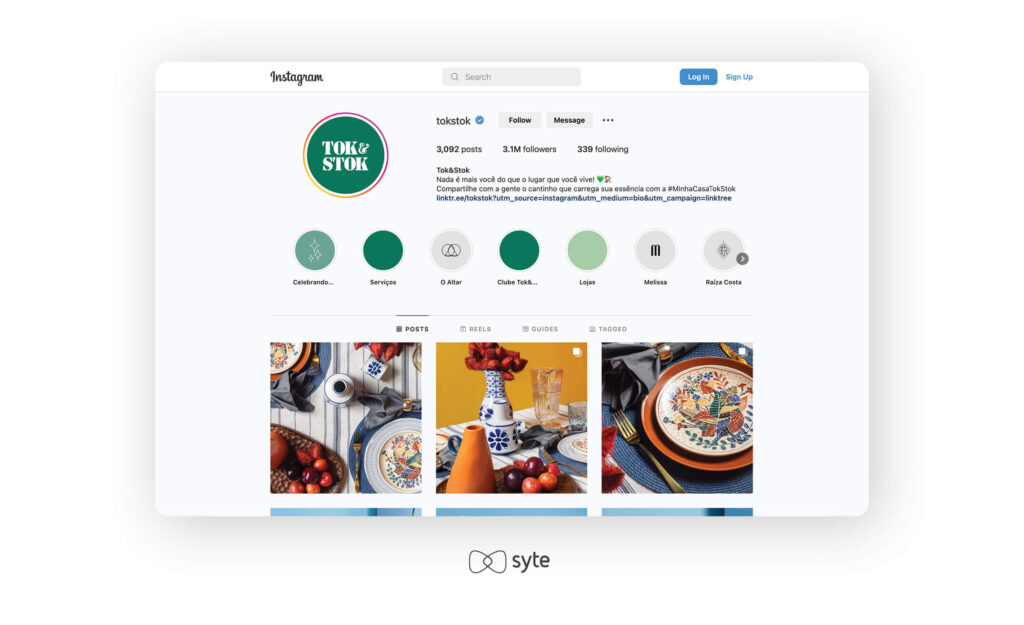The home decor eCommerce market has grown significantly in recent years. With more brands entering the market and competing for consumer attention, providing a memorable customer experience (CX) has become pivotal. Home decor brands are increasingly replicating in-store experiences, creating personalized shopping journeys, and recommending relevant products right up shoppers’ alleys, just like an attentive shop assistant or friend.
Home decor and furniture are often high-ticket items involving layered decision-making. To set up on-site product discovery for success, brands can create the right foundation by taking the following steps:
Learn About Your Customers and How They Shop
Inspiration is everywhere. Arm yourself with the knowledge of where and how shoppers are finding your products. It can be through a YouTube video, a social media post, an interior design magazine, an influencer tip, or a recommendation from friends. Segmenting customers by age, location, and device can provide clues about shopping habits, but granular insights informed by consumer behavior, shopper preferences, and deep data are all the better.
Brands often have tens of thousands of items in their inventory — one can only imagine how much time it would take to sift through pages and pages of products. This is why it’s important to implement robust AI tagging to manage and organize SKUs so relevant search results will turn up. Site functions such as visual search, filters, and product recommendation engines depend on accurate, consistent, and updated product tags.
Optimize Both Desktop and Mobile Experiences
Brands should make on-site navigation easy and intuitive. At least 42% of people will leave a website because of poor functionality. It pays to create links that are easy to use and understand, either with words or images. Other useful functions such as furniture image search and discovery banners should also be included as part of the desktop and mobile experience. Nourison is a great example of making shopping easier with a clearly labeled navigation menu accompanied by images.

Some of the most crucial parts of the product discovery process include:
Shoppers often have difficulty articulating what they’re looking for. Brands can bridge the gap with a visual AI-powered search engine that enables people to use images instead of words to find what they’re looking for. All a buyer has to do is upload an image, or use samples from a search page similar to Castorama’s. Research has found that customers are more likely to add products to cart when using visual search over traditional text search functions.

2. Ranking Search Results With Customer Context and Intent
The average time on pages across all industries is 54 seconds, which gives retailers a very short amount of time to capture attention. It is imperative to connect shoppers with the best items at the best time. With the right home decor merchandising tools, the results can be prioritized based on relevance, real-time customer context, and intent.
3. Using Product Recommendation Carousels
One way to replicate the brick-and-mortar experience is through eCommerce product recommendations, which could be considered the virtual counterpart of a style concierge. Using customer behavior and interactions as a basis, brands can provide curated recommendations reflecting individual tastes. This conveys an understanding of your shoppers and their preferences. An overwhelming 75% of shoppers are more inclined to buy from brands that provide personalized recommendations, while 56% say they’re likely to come back for more purchases. Mobly’s “Similar Products” and “You Might Also Like” carousels are examples of Recommendation Carousels.

4. Creating Inspirational Galleries and Collections
Customers can’t always visualize what they want for a space, or might not have an image of what they’d like on hand. In such cases, you can provide inspiration with curated galleries and collections. Pre-load images on the camera search page to make it easy for customers to experiment. Shoppers can also browse photos in custom galleries based on the mood, occasion, or style, just like Tanguay has done with its dining room suggestions. This is quite useful, with half of customers saying images help them decide what to buy.

5. Serving as an Authoritative Voice With Informational Content
Furniture purchases are rarely impulsive. Many consumers research online first to make sure they’re maximizing their spending. In 2021, 70% of customers typically read between one and six customer reviews before making a purchase decision. Don’t make shoppers go farther than your website for useful information. With blogs and guides such as CITY Furniture’s how-to article on accessorizing your living room, you can educate customers about finding the perfect products while seizing the opportunity to add shoppable content.

6. Establishing Trust Through User-Generated Content
High-priced verticals such as furniture and home decor require more trust than others. Shoppers may be wary of online marketing, but user-generated content (UGC) can help balance things out. Customers also value the opinion of verified shoppers who are seen as less likely to be motivated by money. Many find UGC 9.8x more impactful than influencer content, and 79% say it highly impacts their purchases. Reviews included in product pages such as that of Brico Depot are a simple but effective way to use UGC.

7. Upselling and Cross-Selling Relevant Items
You can make customers feel they’re getting more value from their purchase by recommending complementary items. Through AI, brands can make smarter eCommerce home decor suggestions to help customers realize their ideas. Almost half of consumers bought a product they didn’t initially intend to purchase after seeing a personalized recommendation. Coleman Furniture does this even when the shopper isn’t on the checkout page yet.

8. Providing Multiple Ways to Inspect Products
Brands can ease product uncertainty with high-quality photos that customers can zoom in on, as well as other tools to improve visualization. Retailers integrating 360-degree displays and augmented reality (AR) and virtual reality (VR) are becoming more popular for a truly immersive experience. No longer a novelty, AR is seen as a practical tool for 76% of people who see a use for it in their everyday lives, including shopping. Brands like Orientbell use AR to help customers with their purchase decisions by allowing them to upload a picture and “try on” products for their rooms virtually.

Getting the Word Out
Build your relationship with customers in the following ways:
Social media makes it easier for customers to reach out to their preferred brands. It is a venue for announcing new products, discounts, and promotions, launching interactive marketing campaigns, and gathering feedback – all of which can capture customer attention and broaden awareness about your brand and products. At least 85% of marketers cite increased exposure as a top benefit of social media, with some like Tok & Stok having a significant following of 3.1 million Instagram users.

Tap Content Creators to Extend Your Audience
Influencer marketing is becoming more and more ubiquitous, so brands should be picky about who they partner with. Still, influencers have a significant impact, with 61% of users trusting brand recommendations from influencers they follow. While Instagram and Pinterest are popular for visual verticals such as home decor, TikTok is a budding platform worth exploring for furniture brands seeking to connect with younger target audiences.
Connect Genuinely Via Dynamic Emails
Brands can connect with customers through personalized emails. Besides encouraging purchases through newsletter sign-up discounts, brands can also make personalized product recommendations based on wishlists, browsed items, and abandoned carts. Email personalization translates to sales, and marketers report a 20% increase in revenue with personalized email campaigns.
Incentivize the Use of Mobile Apps
Shoppers are constantly on their phones, making them another channel for product discovery. When bored, mobile users can simply open an app and scroll through products until they find something they’d consider buying. In 2021, mobile users spent an average of 13.01 minutes on shopping apps. Push notifications can be used to draw customers back to the app and shoppers can be incentivized for using it.
Evaluate, Iterate, and Improve
eCommerce is never stagnant, especially with technological advancements rolled out every year and more brands entering the market. As such, it is important to set up processes to ensure your product discovery systems are always improving. You can begin with the following practices to ensure you’re always a step ahead:
The retail market can be unpredictable, but A/B testing can help you keep up with changing customer behavior and preferences. A/B testing gauges how effective certain factors are in shaping a seamless shopping experience. For example, you can look at which homepage layout or banner attracts more customers. You can also experiment with product placement or suggestions across your site. With the A/B test results in hand, brands can boost conversion (CVR), customer retention, and revenue.
Analyze Search Data and Intent for Better Decision-Making
AI-powered deep tags, which are the foundation of advanced product discovery tools such as visual search and personalized product recommendations, produce a wealth of data and deep insights. Information on trends and product performance can be the basis for decision-making and strategizing stock levels and prices.
Wrap-Up
The outlook for the home decor market is a positive one, with some slowing down anticipated in the near future. Nevertheless, providing a seamless product discovery and shopping experience will make a big difference, creating loyal customers and encouraging organic recommendations.